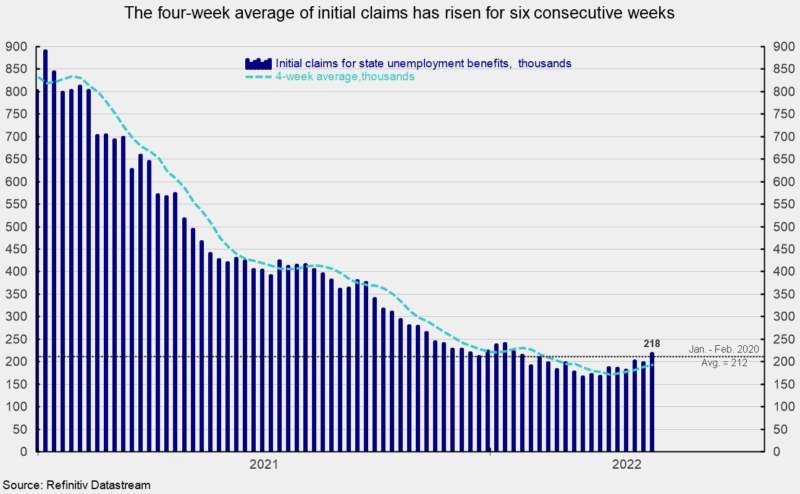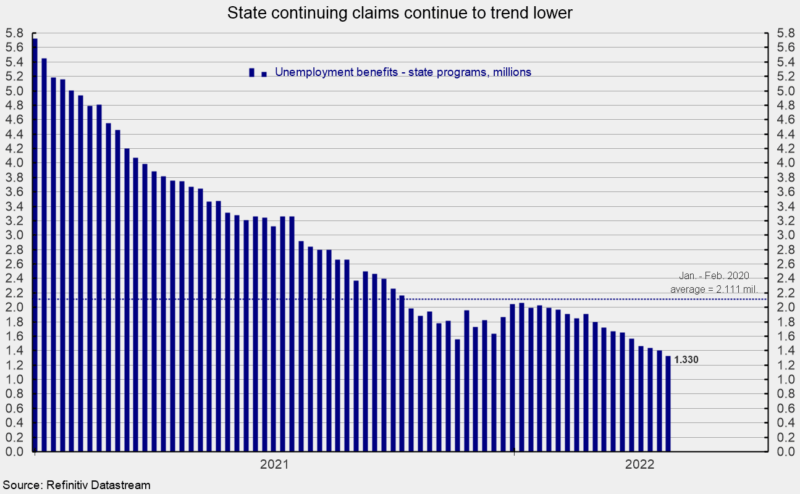Weekly Initial Claims Hit the Highest Level Since January
Initial claims for regular state unemployment insurance rose 21,000 for the week ending May 14, coming in at 218,000 (see first chart). The latest result is the highest level since January 22. Claims have now increased in four of the last eight weeks and are above the January – February 2020 average of 212,000 for the first time since January 28. However, by long-term historical comparison, initial claims remain extremely low.
The four-week average rose for a sixth consecutive week, coming in at 199,500, up 8,250 from the prior week. Weekly initial claims data continue to suggest a very tight labor market, though the recent upward trend is a concern. The Russian invasion of Ukraine, renewed lockdowns in China, and a new Fed tightening cycle are likely to continue distorting the global economy over coming months.
The number of ongoing claims for state unemployment programs totaled 1.330 million for the week ending April 30, a drop of 72,166 from the prior week (see second chart). State continuing claims have declined in 14 of the past 16 weeks and have been below their pre-pandemic level of 2.111 million since October 2021 (see second chart).
The latest results for the combined Federal and state programs put the total number of people claiming benefits in all unemployment programs at 1.371 million for the week ended April 30, a decrease of 68,885 from the prior week. The latest result is the twelfth week in a row below 2 million.
Initial claims remain at an extremely low level by historical comparison, but recent weeks have seen an upward trend become more apparent. The trend may be temporary or may be an early warning sign. The overall low level of claims combined with the record-high number of open jobs suggest the labor market remains very tight. The tight labor market remains one of the strongest parts of the economy, providing support for consumer attitudes and consumer spending. However, persistent price increases are starting to work against consumer attitudes.
Continuing labor shortages, along with materials shortages and logistical issues, are likely to continue to hamper the growth in production across the economy and sustain upward pressure on prices. In addition, the Russian invasion of Ukraine, renewed lockdowns in China, and the start of a new Fed tightening cycle will continue to weigh on global economic activity. The outlook remains highly uncertain.







